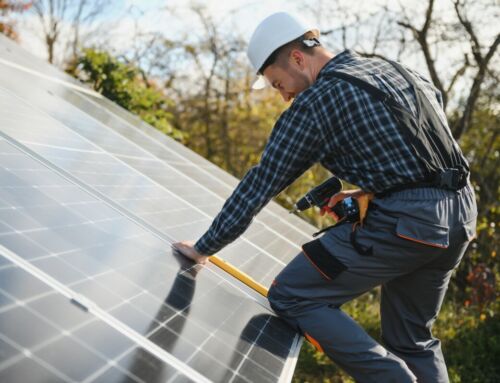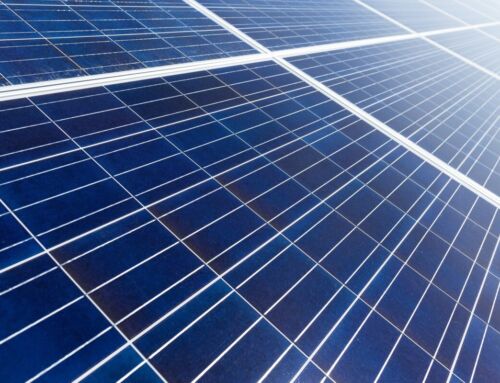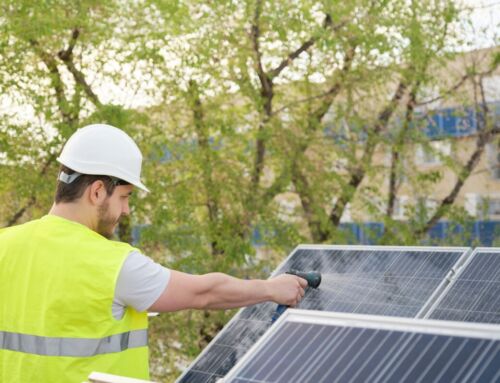Parts of a solar panel system are the building blocks that allow solar energy to power your home or business. If you’re considering switching to solar energy, it’s crucial to understand not just the panels themselves but the full system that makes solar electricity usable and efficient. From the shiny modules on your roof to the electrical components in your basement or garage, each piece of the system has a vital role.
As solar becomes more mainstream in the U.S., homeowners are looking to become more informed about what they’re buying. Whether you’re working with a solar company or installing a DIY solar kit, knowing each component ensures smarter choices, better maintenance, and long-term efficiency.
🔷 What Is a Solar Panel System?
A solar panel system, also known as a photovoltaic (PV) system, captures sunlight and converts it into usable electricity for your home or business. While many think solar begins and ends with the panels, the full system includes several key parts—each working together to ensure smooth energy production, conversion, storage, and distribution.
Solar panel systems can be grid-tied, off-grid, or hybrid, but they all share core components that make the magic of solar energy possible.
🔷 Major Parts of a Solar Panel System
Let’s dive into the essential parts of a solar panel system, breaking down each component’s function and importance.
1. Solar Panels (Photovoltaic Modules)
Solar panels are the most visible part of any system. They capture sunlight and convert it into direct current (DC) electricity.
-
Material: Typically made from silicon (monocrystalline, polycrystalline, or thin-film)
-
Function: Absorbs sunlight and creates electricity via the photovoltaic effect
-
Efficiency Range: 15–22% for residential systems
-
Lifespan: 25–30 years
2. Inverter (Central, Micro, or Hybrid)
The inverter converts the DC electricity generated by solar panels into alternating current (AC) electricity used in homes.
-
Types:
-
String Inverter: One per system or per array
-
Microinverters: One per panel (more efficient but costlier)
-
Hybrid Inverters: Combine functions for solar + battery systems
-
-
Efficiency: 95–98% typically
-
Importance: Without an inverter, your solar power is unusable in standard home appliances.
3. Mounting System (Racking and Rails)
The mounting system secures the solar panels to your roof, ground, or pole.
-
Types:
-
Roof-mounted: Attached using rails or rail-less systems
-
Ground-mounted: Ideal for properties with space
-
Pole-mounted: Usually used in agricultural or off-grid settings
-
-
Material: Aluminum or stainless steel for durability
-
Angle & Orientation: Optimized for maximum sun exposure
4. Solar Batteries (Optional but Increasingly Popular)
Solar batteries store excess energy generated during the day for use at night or during outages.
-
Types:
-
Lithium-ion (most common)
-
Lead-acid (cheaper but shorter lifespan)
-
Saltwater (eco-friendly)
-
-
Purpose: Increases energy independence and supports off-grid or hybrid systems
-
Popular Brands: Tesla Powerwall, LG Chem, Enphase IQ Battery
5. Charge Controller (For Off-Grid Systems)
In off-grid or hybrid setups, a charge controller is essential to regulate battery charging.
-
Function: Prevents overcharging or deep discharging of the battery
-
Types:
-
PWM (Pulse Width Modulation)
-
MPPT (Maximum Power Point Tracking) — more efficient
-
6. Electrical Panel (Breaker Box)
Your home’s electrical panel connects the solar system to your home’s electrical infrastructure.
-
Role: Directs solar electricity to different circuits
-
Important For: Safety, load balancing, and integration with your existing utility service
7. Net Meter (For Grid-Tied Systems)
A net meter tracks how much electricity you send back to the grid versus how much you consume.
-
Function: Enables net metering, which can reduce or eliminate your electric bill
-
Installed By: Your utility company
8. Wiring and Connectors
The wiring is what ties everything together—carrying electricity between the panels, inverter, batteries, and the grid.
-
Material: Copper or aluminum
-
Protection: Must be weather-resistant and properly insulated

Thinking about solar energy? See how it can lower your bills and elevate your home’s efficiency. Get Your Free Estimate at NewSolar Quotes
🔷 Optional Add-ons and Accessories
-
Monitoring System: Allows real-time tracking of your system’s performance via app or website
-
Optimizer Modules: Enhances panel-level efficiency, especially in partially shaded systems
-
Surge Protection Devices (SPDs): Protects system from voltage spikes
-
Smart Switches & Energy Management Devices: Helps optimize power use from solar vs. grid
🔷 Example: How the System Works Together
Here’s a simplified breakdown of how the parts of a solar panel system work in unison:
| Solar Component | Function |
|---|---|
| Solar Panels | Capture sunlight and convert to DC electricity |
| Inverter | Converts DC to AC for home use |
| Mounting System | Holds panels securely in place |
| Electrical Panel | Distributes electricity to home appliances |
| Battery (optional) | Stores unused electricity for later use |
| Net Meter | Tracks input/output to the power grid |
| Wiring | Connects all components |
This seamless integration is what makes solar energy practical and scalable for homeowners and businesses alike.
🔷 Types of Solar Panel Systems
Understanding the parts of a solar panel system also requires knowing the system type you’re installing:
1. Grid-Tied System
-
No batteries
-
Connected to local utility
-
Uses net metering
-
Most cost-effective for urban/suburban homes
2. Off-Grid System
-
Completely self-sustaining
-
Requires batteries + charge controller
-
Ideal for remote areas
3. Hybrid System
-
Uses both grid and batteries
-
Offers energy independence with backup reliability
-
Growing in popularity across the U.S.
🔷 Why It’s Important to Know Each Part
Being informed about each part of a solar panel system has real benefits:
-
Better Buying Decisions: Avoid overpaying or buying incompatible components
-
Maintenance Know-How: Easier troubleshooting and upkeep
-
Upgrades and Expansion: Knowing the roles makes it easier to expand or integrate storage later
-
Cost Management: Understanding parts helps assess quotes more accurately
🔷 FAQs
1. What are the most important parts of a solar panel system?
The most critical components are solar panels, inverter, mounting system, and wiring. Batteries and net meters are vital depending on your setup.
2. Do I need a battery in every solar panel system?
No. Grid-tied systems often don’t use batteries. However, adding a battery offers backup power and energy independence.
3. How long do parts of a solar panel system last?
Panels: 25–30 years, Inverters: 10–15 years, Batteries: 5–15 years, Mounting & wiring: 20+ years.
4. What maintenance do solar systems need?
Mostly cleaning and annual inspections. Batteries and inverters may require occasional professional service.
5. Can I install a solar system myself?
DIY kits are available, but understanding all the parts of a solar panel system is essential for safety and efficiency. Hiring professionals is often recommended.
🔷 Final Thoughts
The success of your solar investment depends on understanding the parts of a solar panel system. While solar panels steal the spotlight, it’s the combination of inverters, batteries, racking, wiring, and smart monitoring that makes solar energy truly effective and reliable.
Whether you’re choosing a DIY solar kit or hiring professionals, having a clear understanding of each component will help you build a system that lasts decades and pays off quickly.
Switch to solar and start saving now! Don’t miss out on a cleaner, cost-effective energy solution. Schedule Your Free Consultation at NewSolar Quotes
Discover more ways to save with solar! Visit New Solar Quote and see the potential for your home.





